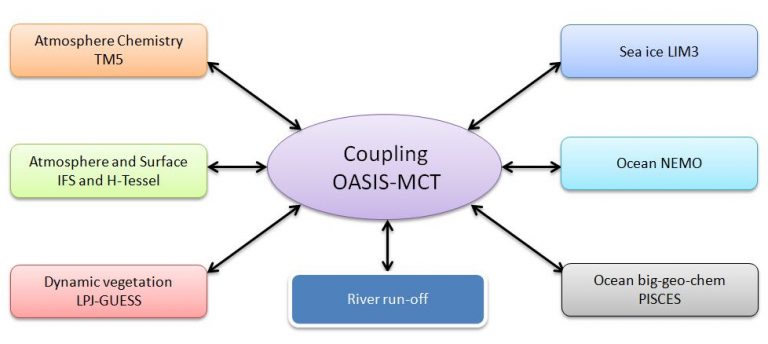The Intergovernmental Panel for Climate Change (IPCC), the leading international body for the assessment of climate change, produces periodic assessment reports summarising the state of knowledge of the global climate system. The latest of these reports, AR5, stated that “warming of the climate is unequivocal, and since the 1950s, many of the observed changes are unprecedented”.
In our changing climate, the need for reliable 21st century global and Irish climate model projections is evident. The Coupled Model Intercomparison Project (CMIP) organised under the World Climate Research Program was set up to compare global coupled climate models, to better understand future climate change. Coupled models are composed of two or more climate system component models, atmosphere and ocean, for instance. The 6th phase of CMIP will play a key part in the 6th IPCC Assessment Reports. Climate models are believed to provide increasingly reliable estimates of the future state of the climate, as they are based on fundamental laws of physics and show increasing skill in the representation of past climate.
A number of climate models, including EC-Earth (schematic in Figure 1), are being used in CMIP6. Climate simulations are run within Model Intercomparison Projects (MIP). In total there are about 20 MIPs in CMIP6 which deal with different aspects of the climate system, for example aerosols, radiative forcing, the ocean and cloud feedback. Climate researchers at Met Éireann and ICHEC will be involved in ScenarioMIP climate projection simulations which will be run under different Representative Common Pathway (RCP) scenarios (i.e. effectively different concentrations of greenhouse gases) using high-performance supercomputers at ICHEC and ECMWF.

Figure 1: The EC-Earth global climate coupled atmospheric-oceanographic model consists of the atmospheric IFS model developed at ECMWF coupled to the NEMO LIM3 ocean / sea ice model developed at University of Louvaine-la-Neuve. It also has vegetation, air chemistry, and bio-geo chemistry models and can be coupled to a Greenland ice sheet.
Previous climate projections for Ireland indicate an overall increase in mean annual temperature (1-1.6 degrees), and a reduction in the number of frost days by about 50% by the middle of this Century (2041-2060). A 20% increase in heavy precipitation events is also expected, but at the same time the number of dry periods is predicted to increase by between 12 and 40%. The CMIP6 global data will be used to update or refine these predictions.